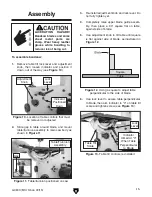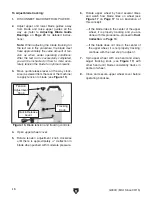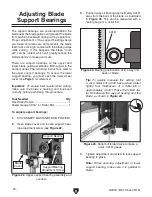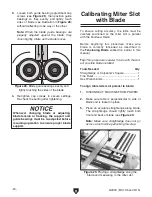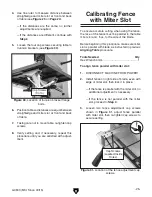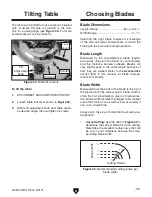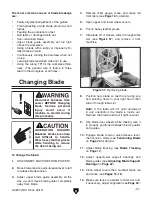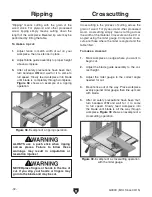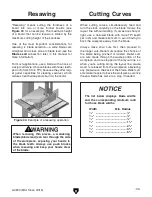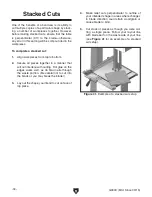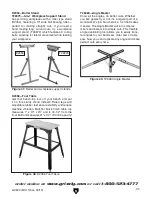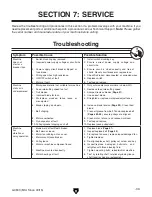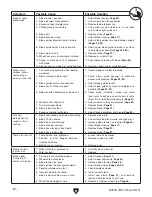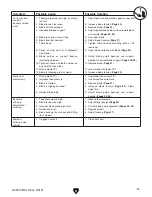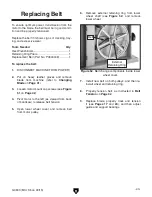
G0803
(Mfd. Since 09/15)
-29-
Choosing Blades
Selecting the right blade requires a knowledge
of the various blade characteristics to match the
blade with the particular cutting operation.
Blade Length
Measured by the circumference, blade lengths
are usually unique to the brand of your bandsaw
and the distance between wheels. Blades will
vary slightly even in the same length because of
how they are welded. Refer to the
Accessories
section later in this manual for blade replace-
ments from Grizzly.
Blade Width
Measured from the back of the blade to the tip of
the blade tooth (the widest point), blade width is
often the first consideration given to blade selec-
tion. Blade width dictates the largest and smallest
curve that can be cut, as well as how accurately it
can cut a straight line.
Always pick the size of blade that best suits your
application.
•
Curve Cutting: Use the chart in Figure 35 to
determine the correct blade for curve cutting.
Determine the smallest radius curve that will
be cut on your workpiece and use the corre-
sponding blade width.
Blade Width
Cutting Radius
Figure 35. Recommended cutting radius per
blade width.
Blade Dimensions
Length Range ................................. 61
13
⁄
16
–62
3
⁄
16
"
Width Range .............................................
1
⁄
8
"–
3
⁄
8
"
Tilting Table
The table can be tilted to make angled or beveled
cuts. A simple tilt scale is provided on the trun-
nion for a quick gauge (see
Figure 34). For more
accurate results use a protractor.
To tilt the table:
1. DISCONNECT MACHINE FROM POWER!
2. Loosen table lock lever shown in Figure 34.
3. Rotate tilt adjustment knob until table reach-
es desired angle, then re-tighten lock lever.
Figure 34. Table tilt controls.
Lock
Lever
Tilt
Adjustment
Knob
Tilt Scale
Pointer
Summary of Contents for G0803
Page 56: ...54 G0803 Mfd Since 09 15...
Page 60: ......

